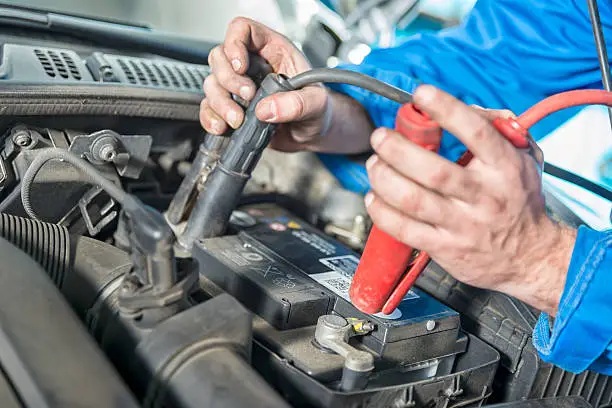Jump Start Like a Pro: The No-Spark Method!
Author: JRAutofix Date Posted:12 August 2025

There’s nothing more frustrating than turning the key in your ignition—only to hear the dreaded click. A dead battery can strike at the worst times, either because the battery is:
- Older than 4 years, If the battery is old, it might not hold a charge effectively.
- Someone left a light on.
- Cold weather can affect the power output making it difficult to start.
- Sulphated or loose connections: Sulphate or loose connections can disrupt the electrical flow, preventing the battery to function properly.
- Parasitic drain: Some cars have systems that draw power from the battery even when the car is off, leading to a slow drain.
- Faulty Alternator: If the alternator is not functioning properly the battery could eventually lose it’s charge. How to check.
Now there is 2 ways to jump start your car either with cables using a second vehicles as per below or with a jump starter.
With a portable jump starter, you’re back on the road in minutes—no waiting, no flagging down strangers or mucking around with cables.
Cable don’t have any safety features and could cause more damage (potential sparks around the engine, hazardous floating cables) without mentioning having 2 cars side by side on the road.
Jump starters are safe they include a lot of safety protections to prevent any damage:
- Short circuit protection
- Reverse polarity protection
- Over current protection
In this post, we’ll walk you through how to jump start your car the safe and correct way using a jump starter with no spark guaranteed.
What is a jump starter?
A jump starter is a portable battery device designed to give your vehicle’s battery a boost when it’s dead or too weak to crank the engine. Modern jump starters are compact, powerful, and often include extras like USB ports, flashlights, and air compressors.
Safety First: Before You Start
Before connecting anything, make sure you:
- Check the battery: Ensure it’s not leaking, swollen, or damaged.
- Check the battery connection: Make sure they are clean and making good contact.
- Turn everything off: Headlights, radio, AC, and ignition should all be off.
Read your vehicle’s manual: Some hybrid or luxury vehicles may have specific instructions or warnings.
Step-by-Step: How to Jump Start a Car Safely No Spark Guaranteed
- Turn off the ignition
Make sure your car and all electrical accessories are turned off. - Locate the battery
Open the hood and locate your car battery. If your battery is hidden, your vehicle may have dedicated jump-starting terminals. - Connect the clamps Lead to the battery
- Black clamp to the negative battery terminal.
- Red clamp to the positive (+) terminal on the battery.
- Connect and power on the jump starter
Once the clamps are connected securely to the battery on some jump starters you might be able to read the battery voltage which is convenient as you can confirm the issue is with the battery not the starter.- Connect the jump starter to the clamp lead
- Switch the jump starter On.
Note: You only turn the jump starter on when everything is connected to avoid any spark when connecting.
- Start the car
Try starting your car. If it doesn’t start right away, wait 30 seconds and try again. - Remove the Jump starter (in reverse order)
- Turn off the jump starter
- Disconnect the jump starter from the lead
- Remove the clamps off the battery (No preferred order for the clamps)
Note: When the jump starter is switched off and disconnected from the leads there is no risk of sparks.
Let your car run
Keep the engine running for at least 15-30 minutes to allow the alternator to recharge the battery.
Common Mistakes to Avoid
- Connecting clamps in the wrong order with jumper cables– This can cause dangerous sparks or damage electronics.
- Jump starting a leaking or frozen battery – Always inspect your battery first.
- Not recharging the jump starter – Always recharge it after use so it's ready next time.
Pro Tip: Keep a Jump Starter in Your Vehicle
Portable jump starters are a lifesaver—especially if you drive long distances, commute early or late, or live in a cold climate. Investing in one means you’ll never have to wait for roadside assistance or rely on a stranger's jumper cables again.
It’s a quick and practical solution to get the car running again without the need of assistance. However, it’s important to address the root cause of the deficient battery (such as test the battery, charging the battery with an external battery, replacing it or fixing electrical issues to prevent future problems.
Conclusion:
Learning how to safely use a jump starter isn’t just a helpful skill—it’s peace of mind. With a little preparation and a reliable jump starter, you can take control of unexpected battery failures and stay safe wherever the road takes you.
